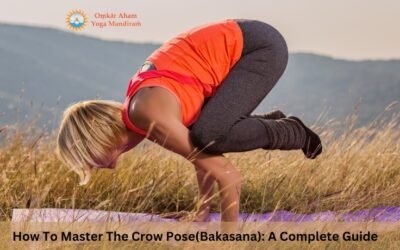Are you suffering from the excruciating pain caused by sciatica? If so, you’re not alone. This condition affects millions of individuals worldwide and occurs when the sciatic nerve is compressed or irritated. While many treatment options are available, including medication and surgery, yoga is a natural and effective way to manage sciatica pain.
Effective Yoga Asanas For Sciatica Pain
In this article, we’ll look at some effective yoga asanas that can help relieve sciatica pain. These asanas can help stretch and strengthen the muscles around the sciatic nerve, reducing pain and discomfort.
Balasana (Child Pose)
Balasana, also known as Child Pose, is a simple but effective asana that can help stretch the lower back, hips, thighs, and ankles. To perform this asana:
- Kneel on the floor with your great toes touching and your knees spread apart.
- Slowly lower your body forward, stretching your arms out before you.
- Relax your forehead on the floor and breathe deeply for several minutes.
This asana can help stretch the lower back muscles, relieving pressure on the sciatic nerve. It also helps calm the mind and reduce stress, which can contribute to sciatica pain.
Downward-Facing Dog
Downward-Facing Dog, or Adho Mukha Svanasana, is a famous yoga pose that can help stretch the entire body, including the hamstrings, calves, and spine. To perform this asana, begin on your hands and knees, with your wrists straight under your shoulders and your knees under your hips. Then, gradually lift your hips up and back, neatening your arms and legs and creating an inverted V-shape with your body.
This asana can help stretch the hamstrings and calves, reducing pressure on the sciatic nerve. It also helps strengthen the muscles in the back and legs, which can improve posture and reduce the risk of future injuries.
Ardha Chandrasana
Ardha Chandrasana, also understood as Half Moon Pose is a challenging but effective asana that can help strengthen the muscles in the legs and hips while stretching the hamstrings and the spine. To perform this asana:
- Start in Downward-Facing Dog and move your right foot between your hands.
- Lift your left leg, keeping it straight and parallel to the floor.
- Get your left hand up toward the ceiling and hold for several breaths.
- Repeat on the other side.
This asana can help strengthen the muscles in the legs and hips, reducing pressure on the sciatic nerve. It also helps improve balance and coordination, decreasing the risk of falls and other injuries.
Salabhasana
Salabhasana, also known as Locust Pose, is a challenging but effective asana that can help strengthen the back, hips, and legs muscles. To perform this asana:
- Lay on your stomach with your arms on your flanks.
- Lift your legs, chest, and arms off the floor, keeping them direct and parallel to the floor.
- Hold for several breaths, then lower your body to the floor.
This asana can help strengthen the muscles in the back and hips, reducing pressure on the sciatic nerve. It also helps improve posture and reduce the risk of future injuries.
Conclusion
In conclusion, yoga can be a powerful tool in managing sciatica pain. Practising these primary yoga asanas regularly allows you to stretch and strengthen the muscles around the sciatic nerve, reducing pain and discomfort. Additionally, yoga can help improve posture, balance, and coordination, reducing the risk of future injuries.
However, it’s important to remember that yoga should be practised under the guidance of a qualified yoga teacher, especially if you’re new to the practice or have a pre-existing medical condition. Constantly listen to your body and avoid pushing yourself too hard. With patience and practice, you can find relief from sciatica pain and improve your overall well-being.
Here you can check our 200-hour yoga teacher training Rishikesh Course.
For further details contact us at:
Call/WhatsApp: +91-9997744876
Mail us at: info@yogateachertrainingschool.com





















